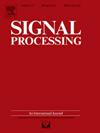Split-complex feedforward neural network for GFDM joint channel equalization and signal detection
IF 3.4
2区 工程技术
Q2 ENGINEERING, ELECTRICAL & ELECTRONIC
引用次数: 0
Abstract
This paper presents a novel approach for channel equalization and signal detection in generalized frequency division multiplexing (GFDM) systems, designed for dispersive channels and capable of handling nonlinearities. In digital communications systems, deep learning (DL) techniques have emerged as a promising alternative to traditional adaptive digital signal processing. Although DL is a trending topic and has been applied to areas such as beamforming, channel estimation, equalization, and decoding, there is limited research on the use of complex-valued neural networks (CVNN), particularly in the context of GFDM systems. In this work, we propose a joint channel equalization and signal detection approach for GFDM based on the fully connected CVNN split-complex feedforward neural network (SCFNN). The proposed SCFNN effectively equalizes the dispersive 5G channel while concurrently detects the symbols non-orthogonally multiplexed in frequency, handling both scenarios with and without clipping, all within a single SCFNN. Results are compared with classical equalization and detection algorithms, as well as with the fully connected real-valued neural network (RVNN) approach. The proposed SCFNN solution presents superior symbol error rate (SER) performance while maintaining computational complexity on par with conventional methods.
分割-复杂前馈神经网络用于GFDM联合信道均衡和信号检测
本文提出了一种适用于色散信道并能处理非线性的广义频分复用(GFDM)系统的信道均衡和信号检测新方法。在数字通信系统中,深度学习(DL)技术已成为传统自适应数字信号处理的一种有前途的替代方案。尽管深度学习是一个热门话题,并已被应用于波束形成、信道估计、均衡和解码等领域,但对复值神经网络(CVNN)的应用研究有限,特别是在GFDM系统的背景下。在这项工作中,我们提出了一种基于全连接CVNN分裂-复杂前馈神经网络(SCFNN)的GFDM联合信道均衡和信号检测方法。所提出的SCFNN有效地均衡了色散5G信道,同时检测了频率上非正交复用的符号,处理了有和没有剪切的两种情况,所有这些都在单个SCFNN内。结果与经典的均衡和检测算法以及全连接实值神经网络(RVNN)方法进行了比较。所提出的SCFNN解决方案在保持与传统方法相当的计算复杂度的同时,具有优越的符号错误率(SER)性能。
本文章由计算机程序翻译,如有差异,请以英文原文为准。
求助全文
约1分钟内获得全文
求助全文
来源期刊

Signal Processing
工程技术-工程:电子与电气
CiteScore
9.20
自引率
9.10%
发文量
309
审稿时长
41 days
期刊介绍:
Signal Processing incorporates all aspects of the theory and practice of signal processing. It features original research work, tutorial and review articles, and accounts of practical developments. It is intended for a rapid dissemination of knowledge and experience to engineers and scientists working in the research, development or practical application of signal processing.
Subject areas covered by the journal include: Signal Theory; Stochastic Processes; Detection and Estimation; Spectral Analysis; Filtering; Signal Processing Systems; Software Developments; Image Processing; Pattern Recognition; Optical Signal Processing; Digital Signal Processing; Multi-dimensional Signal Processing; Communication Signal Processing; Biomedical Signal Processing; Geophysical and Astrophysical Signal Processing; Earth Resources Signal Processing; Acoustic and Vibration Signal Processing; Data Processing; Remote Sensing; Signal Processing Technology; Radar Signal Processing; Sonar Signal Processing; Industrial Applications; New Applications.
 求助内容:
求助内容: 应助结果提醒方式:
应助结果提醒方式:


